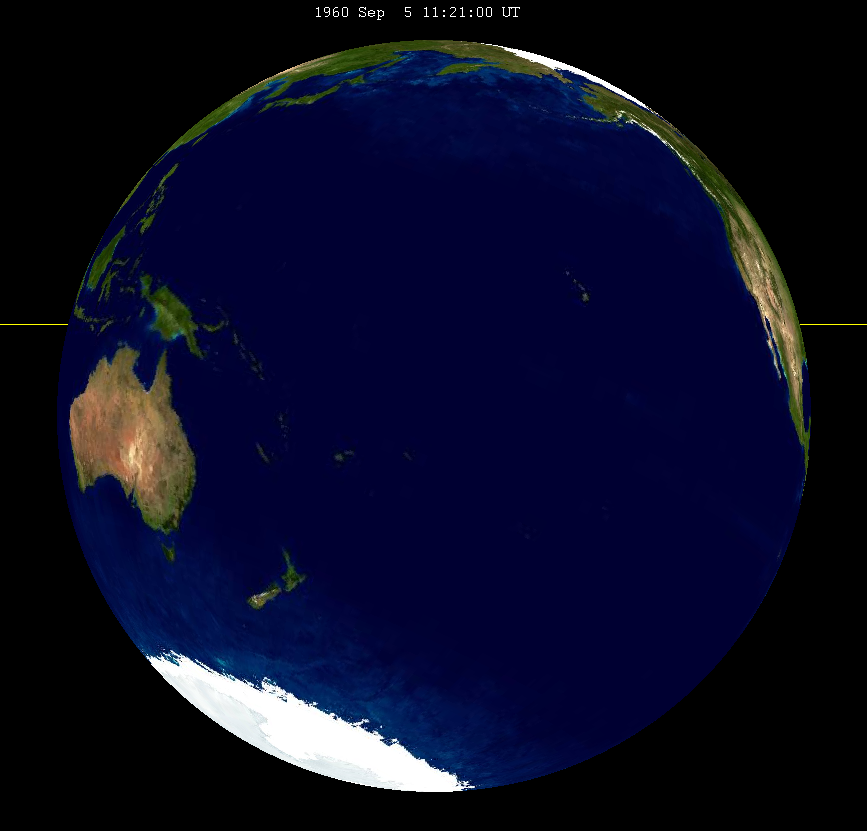September 1960 Lunar Eclipse on:
[Wikipedia]
[Google]
[Amazon]
A total Hermit Eclipse: Saros cycle 127
/ref> This is the 39th member of Lunar Saros 127. The previous event is the August 1942 lunar eclipse. The next event is the September 1978 lunar eclipse.

lunar eclipse
A lunar eclipse occurs when the Moon moves into the Earth's shadow. Such alignment occurs during an eclipse season, approximately every six months, during the full moon phase, when the Moon's orbital plane is closest to the plane of the Eart ...
took place on Monday, September 5, 1960. The moon passed through the center of the Earth's shadow./ref> This is the 39th member of Lunar Saros 127. The previous event is the August 1942 lunar eclipse. The next event is the September 1978 lunar eclipse.
Visibility
It was visible over the Pacific Ocean, and seen rising over Asia and Australia, and setting over North and South America.
Related lunar eclipses
Lunar year series
Saros series
Lunar saros series 127, repeating every 18 years and 11 days, has a total of 72 lunar eclipse events including 54 umbral lunar eclipses (38 partial lunar eclipses and 16 total lunar eclipses). Solar Saros 134 interleaves with this lunar saros with an event occurring every 9 years 5 days alternating between each saros series.Tritos
* Preceded: Lunar eclipse of October 7, 1949 * Followed: Lunar eclipse of October 18, 1967Tzolkinex
* Preceded: Lunar eclipse of July 27, 1953 * Followed: Lunar eclipse of October 18, 1967See also
*List of lunar eclipses
There are several lists of lunar eclipses
On the Moon, by the Earth
; Type
* List of central lunar eclipses
* Total penumbral lunar eclipse
A total penumbral lunar eclipse is a lunar eclipse that occurs when the Moon becomes completely immersed ...
*List of 20th-century lunar eclipses
A total of 229 lunar eclipses took place in the 20th century: 83 penumbral, 65 partial and 81 total.
See also: Lists of lunar eclipses, List of 19th-century lunar eclipses and List of 21st-century lunar eclipses
List
Eclipses from 2001 to ...
Notes
External links
* 1960-09 1960-09 1960 in science September 1960 events {{lunar-eclipse-stub